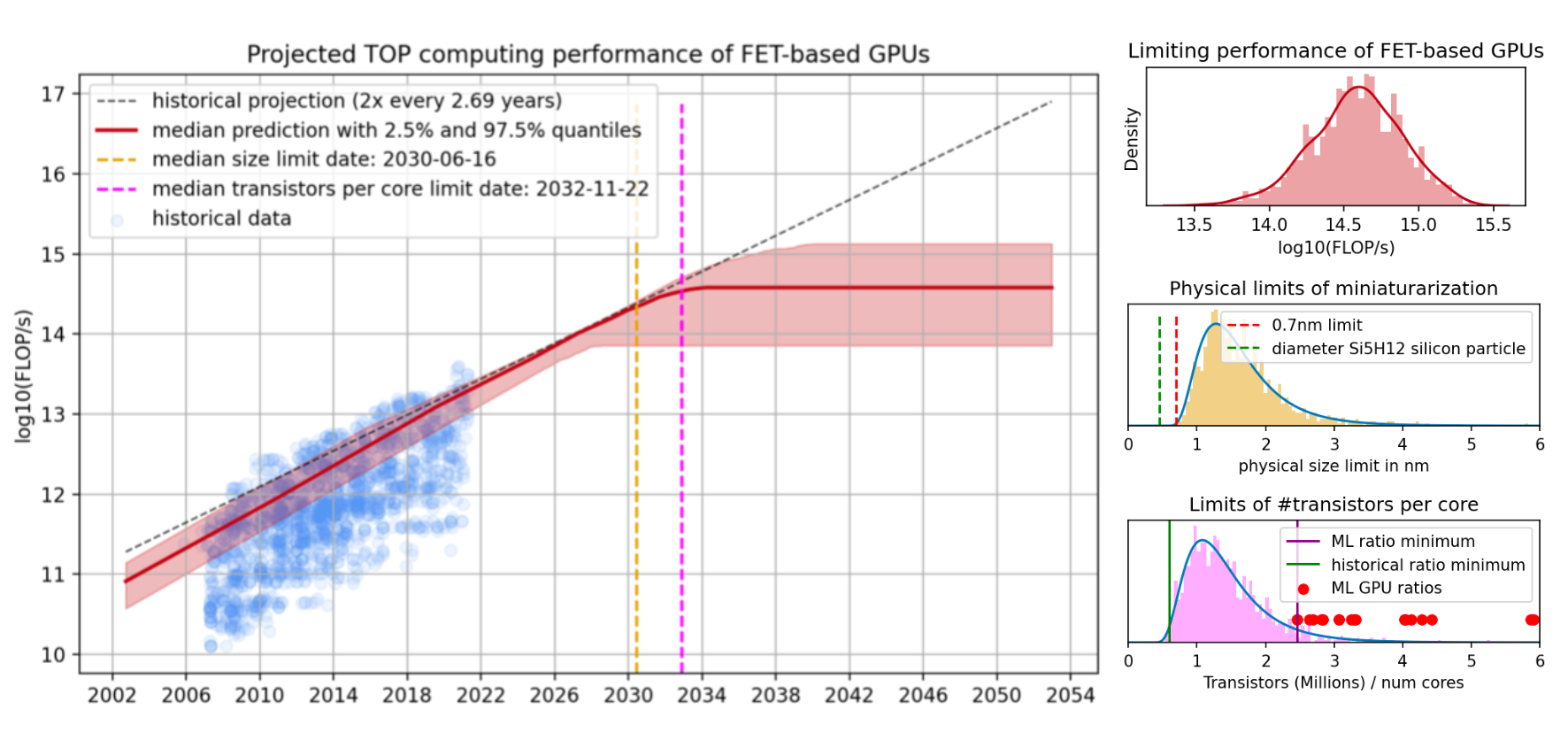We develop a simple model that predicts progress in the performance of field-effect transistor-based GPUs under the assumption that transistors can no longer miniaturize after scaling down to roughly the size of a single silicon atom. We construct a composite model from a performance model (a model of how GPU performance relates to the features of that GPU), and a feature model (a model of how GPU features change over time given the constraints imposed by the physical limits of miniaturization), each of which are fit on a dataset of 1948 GPUs released between 2006 and 2021. We find that almost all progress can be explained by two variables: transistor size and the number of cores. Using estimates of the physical limits informed by the relevant literature, our model predicts that GPU progress will stop roughly between 2027 and 2035, due to decreases in transistor size. In the limit, we can expect that current field-effect transistor-based GPUs, without any paradigm-altering technological advances, will be able to achieve a peak theoretical performance of 1e14 and 1e15 FLOP/s in single-precision performance.

While there are many other drivers of GPU performance and efficiency improvements (such as memory optimization, improved utilization, and so on), decreasing the size of transistors has historically been a great, and arguably the dominant, driver of GPU performance improvements. Our work therefore strongly suggests that it will become significantly harder to achieve GPU performance improvements around the mid-2030s within the longstanding field-effect transistor-based paradigm.
This post is just the executive summary, you can find the full report on the Epoch website.
Human brains are estimated to be ~1e16flops equivalent, suggesting about 10-100 of these maxed-out GPUs a decade hence could be sufficient to implement a commodity AGI (Leading Nvidia A100 GPU already touts 1.2 p-ops Int8 with sparsity), at perhaps 10-100kW power consumption, (less than $5/hour if data center is in low electricity cost market). There are about 50x 1000mm² GPUs per 300mm wafer, and latest generation TSMC N3 process costs about $20000 per wafer - eg an AGI per wafer seems likely.
It's likely then that (if it exists and is allowed) personal ownership of human-level AGI will be, like car ownership, within the financial means of a large proportion of humanity within 10-20 years, and their brain power will be cheaper to employ than essentially all human workers. Economics will likely hasten rather than slow an AI apocalypse.
Jacob Cannell thinks brains are doing 10^14 10^15 FLOP/s.
https://www.lesswrong.com/posts/xwBuoE9p8GE7RAuhd/brain-efficiency-much-more-than-you-wanted-to-know